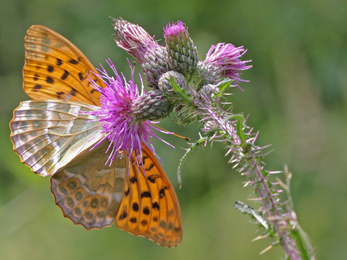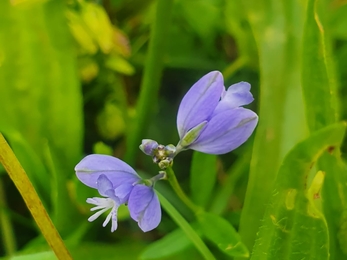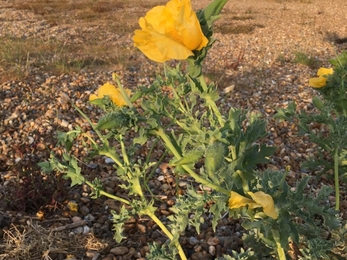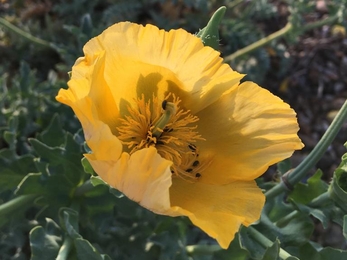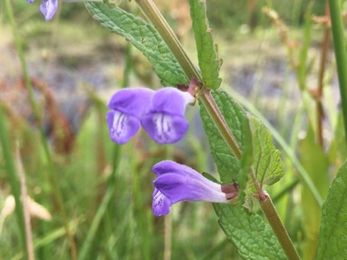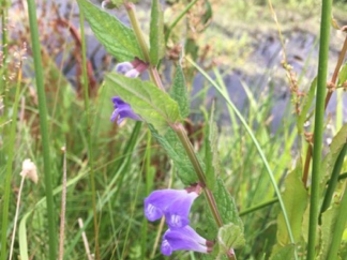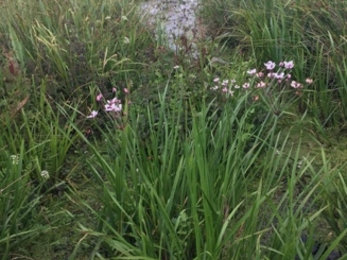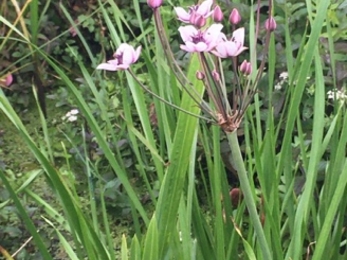Weekly wild news from our reserves, 10th July 2020
By Steve Aylward
These gorgeous silver-washed fritillaries have been spotted at Redgrave & Lopham and Market Weston Fens recently. These large butterflies are so-called as their underwing is lime-green and pink, with silvery streaks running across it. The upperwings are pale orange with patterns of intricate black spots. Males have four broad black stripes called ‘sex brands’ across their upperwings, these are used in an impressive courtship display in which the males loop around the female and shower her with scent scales.
Silver-washed fritillary butterflies live in oak woodland and feed on bramble and other flowers along the rides; the caterpillars feed on common dog violet.
Blue beauties at Market Weston Fen
The intricate blue flowers of common milkwort are now displaying at Market Weston Fen. Common milkwort is a low-growing grassland flower with narrow and pointed leaves that grow alternately up the stem. Its similar and close relative, heath milkwort, has leaves that are opposite each other.
Herbalists once prescribed common milkwort to nursing mothers in the belief that it made 'milk more abundant'. This idea came from its Greek name of 'much milk', which probably actually referred to the milk they got from the cattle that grazed where it grew.
Biting Stonecrop
Also known as 'goldmoss', biting stonecrop is a mat-forming plant which displays dense clusters of small, star-shaped, yellow flowers with long stamens that appear from May to July, and fleshy leaves that have a biting-hot taste. The succulent leaves are egg-shaped and crowded together and it attracts many bees in search of nectar. Sedums, such as biting stonecrop, are popular garden plants and can be planted in the barest of soils, along walls, in rockeries or in containers where they attract lots of nectar-loving insects.
Vipers bugloss
The upright, blue flower spikes of viper's-bugloss can be spotted on chalk grassland, sand dunes, cliffs and banks.
Viper's-bugloss is a hairy plant with dense spikes of bright blue, funnel-shaped flowers with a spotted stem thought to resemble a viper. It is found on chalk grassland, sand dunes, cliffs and disturbed ground, and is in bloom from May to September. It provides food for a range of insects, including buff-tailed and red-tailed bumblebees, large skipper and painted lady butterflies, honeybees and red mason bees. 'Bugloss' comes from the Greek meaning 'ox's tongue' and refers to the rough, tongue-shaped leaves.
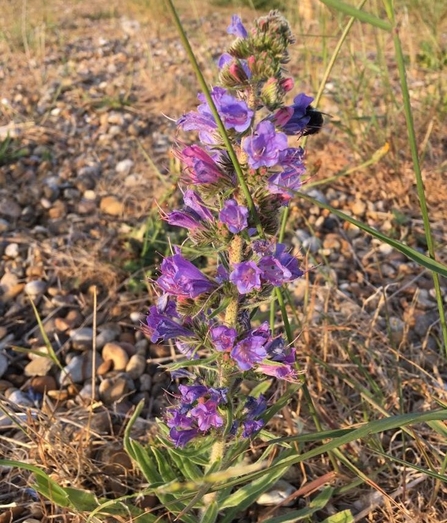
Vipers bugloss - Ben Calvesbert
Yellow horned poppy
Easily recognised in its beach habitat where it often grows in clumps, the yellow horned-poppy flowers in June which are followed by the 'horns' - curling seedpods that can be up to 30cm long. It has yellow petals and blue-grey leaves that are fleshy, covered with fine hairs and lobed. When broken, the plant exudes a yellow sap which is poisonous.
Castle Marshes, a botanical beauty
Skull cap, a flower blue / purple in colour with a dainty colour that got its name from early botanists as it reminded them of the leather skullcap helmets or ‘galerum’ worn by Roman soldiers, hence its botanical name ‘Scutellaria galericulata’, can be found at our Suffolk Wildlife Trust Reserve, Castle Marshes.
The distinctive flowers open in pairs like identical twins at a base of a leaf pair and favours growing on fens and banks near slow moving water. This pretty perennial loves the wet tranquility of Castle Marshes.
Pretty in pink
Despite it resembling a rush, and being called ‘flowering-rush’ isn’t a true rush and it has a family all to itself. This aquatic plant likes to have its roots firmly in water to support the tall, upright stems and when it is in bloom its umbrella flower head resembles that of an allium, with each flower head having only three delicate pink petals to attract pollinating insects.
Once a common plant across the waterways many plants were lost when waterways across the country were dredged. However, there are strongholds of flowering rush in The Broads National Park and the Somerset Levels and thanks to the ongoing work of Suffolk Wildlife Trust, these plants will last for generations to enjoy.
Look out for them flowering between July and August along the water edges.


